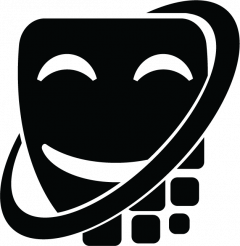The majority of the team attended the 2019 Game Developers Conference in San Francisco, and did not progress much on the project. We’ll bring you more updates next week!
Month: March 2019
Week 8 – Halves
As a team of all first years, we were nervous going into our first ever ETC presentation. But, the preparation for the showcase of our work gave us value insight into everything we’d done throughout the semester. It was good to lay out everything with the goal of understanding.
We also had to properly present both Twitch and improv to an audience that we couldn’t assume knew the depths of either. Talking about why each medium was interesting and their individual unique qualities was a good refresher on why they make sense when put together. Explaining the challenges and potential of their union reminded us of our excitement working on it. Plus, it was a good time to show off all of our graphs and images. We summed it up in the form of similarities and differences, ending on how we believe it is important to create experiences that stay true to both mediums.
We needed experiences that promoted community creation, had predictable formats, and had potential for audience impact. But, we knew we had to be wary of losing viewer understanding, intra-audience interaction, and Twitch’s inherent delay.
While we had all of these large qualities to value, we had to scope down for the remaining semester. So, we will head into the rest of spring trying to maximize feelings of audience impact potential, intra-audience interaction, and viewer understanding. To make these more concrete, we’ll be focusing down into specific game interactions and mechanics that support and explore these areas.
After reviewing our prototypes, we showed off some of our future brainstorming for the semester, and wrapped up the presentation. With our focus now firmly on prototyping, we hope to get a lot of data the rest of the project. We’re hopefully soon to be certified to undertake ethical and reviewed research as well, potentially making our findings more useful and more backed up. We’ll see how we’ll take these summarized learnings to heart as we begin making experiences more rapidly.
Week 7 – New York, New York
Our first playtest immediately after last week’s blog post was a great success. We met and meshed well with our actors, had a decent audience size of 17, and plenty of user interactions to reference. We playtested in two large chunks of about half an hour each, first of Freeze Tag and the second of the TSA game (rebranded as “Whose Bag Is It Anyway?”, now less copyrighted but still legally ambiguous ). The goals of this playtest were to simply test our flow of gold spiked tech, work with our great actors, and get a base level of competency in running these shows live, and we accomplished all of that. We now also recognize the coming challenges of getting large enough audiences to make our tests worthwhile, and how best to use our future qualitative and quantitative data.
We backed away from this relatively simple playtest wanting to stretch our abilities even further. This playtest only effectively had voting as a mechanic, and we weren’t here to limit ourselves to that. We brainstormed ways to spread out more meaningful decision making among the performers and audience both.
The most engaging idea we came up with was a courtroom game. It is still under construction, both literally its backdrop and its design, but the overall idea of it is to have “guest stars” pulled from the audience as witnesses on stand in a trial. Two performers will take the roles of the defendant and prosecutor to elicit random stories from the witness’ testimonies. We are unsure of how best to guide this, and how best to technically get audience members up on “stage,” but pursuing the idea of them as more involved guest stars with performers steering the show is an appealing idea, and one we are thinking about a lot.
After a week of playtest retrospective and presentation preparation, we were able to go to New York on a research trip for the project. Our goal was to see as much improv as possible, interview actors, and understand its conventions fully. We saw five shows in three theaters over two nights in the city, ranging from the best to the worst improvisational acting we have all ever seen.
The one that stood out the most was an improvised musical. Not very relevant to our project’s interaction focus, but the raw skill of the improvisers showed us how engaging they can be on their own. It seems obvious that good actors can act well, but it was a good reminder that skill and showmanship can make almost any performance. This was a part of shifting our focus slightly to include more of the crowd experience, proper production value, and beginnings, breathers, and ends in our live streams, but far from the only factor.
Speaking with the actors after the show lead to good talks. Charlie Todd of The Curfew was our most extensive conversation, and stressed how hard it is to make virtual crowds feel like they’re in on the same “inside joke” as improv audiences are. This struck us as a bit off. Where he was coming from was that all the improv is happening once, and never again, based on conversations, responses, and laughters from the crowd. But this sounded quite a bit like Twitch’s meme culture. Either way, it will be important to us to facilitate the callbacks, responses, and most of all forms of language that are seen and heard in a theater but not in Twitch’s strictly text and emoticon chat.
Finally, we posted improv surveys around the three theaters we attended, with permission. Shoutouts to the one person who filled it in. We will refine this method to get a better feel of improv audiences.
